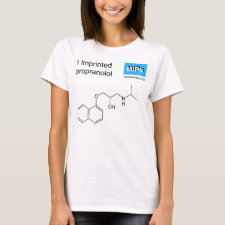
Authors: Dorkó Z, Szakolczai A, Verbic T, Horvai G
Article Title: Binding capacity of molecularly imprinted polymers and their nonimprinted analogs.
Publication date: 2015
Journal: Journal of Separation Science
Volume: 38
Issue: (24)
Page numbers: 4240-4247.
DOI: 10.1002/jssc.201500874
Abstract: Molecularly imprinted polymers bind their target compounds at binding sites. The binding sites are typically based on some type of functional group, such as carboxyl group. The total amount of such functional groups and their distribution into available and unavailable groups is not well known. The total binding capacity is usually indirectly determined from adsorption isotherms, which are measured much below the theoretical binding capacity. This work shows that in a variety of differently prepared, methacrylic acid based molecularly imprinted and nonimprinted polymers, all carboxylic groups used for the polymer synthesis are retained in the polymer, 80 - 90% of them can be accessed by strong bases and essentially the same amount can be used for adsorption of weak bases. This high level of adsorption can only be achieved, however, if the adsorbed weak base is strong enough, if the polymer is sufficiently elastic and if the solvent does not compete too strongly for the binding sites. These results may explain why the maximum binding capacities obtained from isotherm measurements are usually not equal to the total amount of available binding sites. This study confirms the usefulness of nonimprinted polymers at high loadings
Template and target information: propranolol
Author keywords: adsorption, binding capacity, Binding site distribution, Molecularly imprinted polymers, Polymer titration



Join the Society for Molecular Imprinting

New items RSS feed
Sign-up for e-mail updates:
Choose between receiving an occasional newsletter or more frequent e-mail alerts.
Click here to go to the sign-up page.
Is your name elemental or peptidic? Enter your name and find out by clicking either of the buttons below!
Other products you may like:
 MIPdatabase
MIPdatabase









